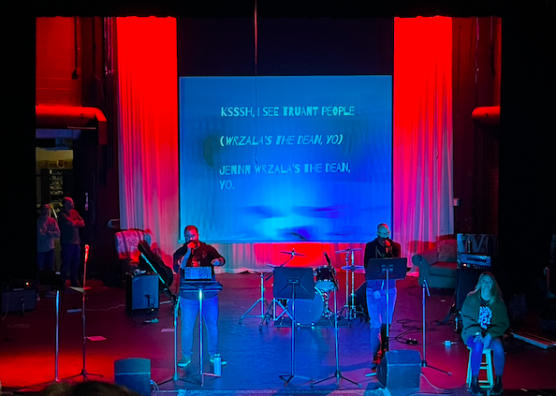The secret behind shopping sustainably
December 14, 2022
It’s that time of year once again: family reunions for Thanksgiving, putting up Christmas decorations, and spending your paychecks on Black Friday. Shopping at bustling, crowded stores or browsing online in the comforts of your own home on Black Friday tempts many to buy unnecessary items by using a good deal as justification. Although there are good intentions behind buying holiday gifts during Black Friday, the materialistic consumerism leads to excessive waste and increased carbon emissions, degrading the environment.
Around 76 percent of U.S. adults shop online. It’s much easier to browse online, adding things to your cart on Black Friday that you would have never wanted to purchase otherwise.
However, it can be difficult to decrease unnecessary shopping if one is unaware about how buying presents online and the coinciding shipping will affect the planet. According to a 2020 article published by the University of Colorado Boulder, their Climate Lab found that any two-day shipping, like the automatic one Amazon Prime offers, leaves a larger carbon footprint than slower shipping alternatives. Faster shipping requires more diesel trucks and less efficient shipping systems.
Black Friday’s environmental impact doesn’t stop the moment the products land on our doorsteps. Every year, Black Friday continues to promote overconsumption, telling shoppers that they need more unnecessary items made from unsustainable materials for the sake of a marked-down price.
Thankfully, there are several steps we can take to help avoid these detrimental environmental impacts. In early 2022, the University of Edinburgh announced an innovative idea to help bring an end to the discount culture that drives overproduction: “MAKE SOMETHING” Week. This initiative starts on Black Friday and aims to disrupt overconsumption and its impact on the climate by motivating people to mend or upcycle what they already own. Another method involves buying consciously and creating a plan before you shop in order to reduce the risk of impulsively purchasing something you don’t really need, or won’t use, which will reduce the risk of waste. Research local and ethical businesses that consciously don’t advocate for overproduction and shop from them to practice conservation ideals.
There are also several holiday gift approaches you can use to help limit your waste and reduce your carbon footprint this holiday season. Theresa Greinig, an environmental educator in the Solid Waste Agency of Northern Cook County, shared unique and creative ideas for a sustainable holiday season. One easy way to reduce the amount of wrapping paper, cardboard, plastic wrap, and other packaging materials is to initiate a gift scavenger hunt where kids can search around the house for their Christmas gifts, for example, rather than opening packaging under the tree. Another step you can take next Thanksgiving to reduce paper and plastic waste is to have a family member or friend bring dishes and utensils from home for a gathering, so you can limit the waste of paper and plastic cups, plates, bowls, spoons, forks, etc. Furthermore, practice using a reusable grocery bag to minimize the mountain of plastic bags that accumulates every time you shop.
There are endless creative possibilities to help you practice sustainability this winter and sharing your tips with others can influence more people to become environmentally-educated individuals, which over time, will slowly start to reduce our overall holiday waste as a community. By reducing waste, we will be able to conserve a clean environment, energy, and natural resources for future generations. The next time you find yourself filling up your shopping cart with countless items, recognize what items you don’t need, put an item back on the shelf, and implement changes to reduce your carbon footprint and spread the word about sustainability this holiday season.




